Can we reconstruct Emily Harris’s Plymouth from traces in family letters and what the city archivists can show us now? Nigel Overton takes us on a tour of central Plymouth based on material compiled by Graham Naylor from the addresses we forwarded a couple of weeks ago. It’s a magic experience that suddenly makes vivid the place where Emily Harris spent the first years of her life. Let’s imagine Emily’s Plymouth as it might appear to the almost four-year-old soon to leave for New Zealand on the Plymouth Company’s first emigrant ship.
Here are her grandparents James Pasco and Mary Roberts Harris at 2 Union St in the heart of the town where the family has its painting and decorating business. This is where Emily was living when she and her sister Catherine were baptised in March 1840 at Charles Church. Also in the household are great-grandmother Susannah Good, great aunt Maria Good and unmarried aunts Emily Theodosia and Ellen Susan Harris, though the aunties could have been governessing in nearby towns in 1840. Here too is Henry Marmaduke, youngest of the Harris uncles and perhaps already working in the family business. Not far away in Park St are Emily’s uncle James Cobham Harris and her aunt Augusta Dobson. Emily herself was born in Park St, her parents’ first married home. Her aunt Catherine Rendel, married to engineer James Meadows Rendel, is living in London but three cousins Lewis (10), George (8) and Stuart (6), are at school in Plymouth at Edward Lane’s establishment in the parish of St Andrew. Another aunt, Emma Court, is in the vicinity, sometimes living at 2 Union St with her daughters Katie (5), Mary (3) and Emma (1), while her surveyor husband Stephen Court looks for work to support the family. Katie Court, born in 1835, is the same age as Emily’s brother Corbyn and the two families are close. Corbyn, Emily and Catherine are surrounded by Harris relatives young and old.
Visiting their maternal grandfather William Hill and unmarried aunt Lizzie is a matter of walking around the corner to Flora Place. Their uncle William Hill works and lives in St Quentin across the Channel in France. Their aunt Emma Hill teaches at a boarding school for young ladies in Liskeard, Cornwall. Going to see Aunt Emma means crossing the Tamar River to Saltash on the steam-powered chain ferry built by Uncle Rendel in the early 1830s. Their aunt Ann, married to businessman Francis Paddon, lives in nearby Glanville St and has one child, a boy also called Francis who is about the same age as Emily. There is something amiss between the Paddons and the Harrises but Emily and her siblings are unaware of the consequences this trouble will shortly visit on their world. Edwin and Sarah Harris have previously lived in Adelaide Terrace, an address befitting Edwins profession as a land surveyor. But now the family will travel steerage to New Zealand on the promise of a town section in an as-yet un-located New Plymouth.
Here is the depot on the waterfront where emigrants are mustered for medical checks and ferried to their vessels standing out in Plymouth Sound. Gulls wheel and scream overhead. Did Edwin and Sarah take their three small children to the top of Plymouth Hoe for one last look at the town lying behind them and the open ocean beyond the breakwater to the south? The Plymouth Company headquarters at New Zealand House, 5, The Octagon, is frantic with last-minute arrangements. Surgeon superintendent Henry Weeks turns a mordant eye on proceedings:
In the autumn of the year 1840 I was attacked with the emigration fever, to which there had been evidently a predisposition in my system for some time. Instead of applying proper remedies, I only increased the disorder by reading prettily got up works on the subject. A company was about this time formed, on, no doubt, the most philanthropical principles, called the Plymouth Company of New Zealand, a branch of the London Company, having the Earl of Devon at its head and Mr. Woollcombe, an attorney of Plymouth, as its secretary.
From this body I accepted an appointment in their projected colony, and hastily commenced the arduous task of rooting-out, in order to plant myself anew in another country. Reader! when I began, little did I think how painful would be the separation from a few dear friends! But the secretary was in haste and the ship daily expected in Plymouth; so what with hurry and excitement, joined perhaps to little obstinate pride, I managed to clear out in tolerable spirits.
Preparations in Plymouth. The emigrants were now arriving at the depot, a splendid dejeuner was given to produce a sensation, and a few working directors met daily at the company’s house. “We,” the principal colonists, were invited to meet in one of the rooms to enter into any arrangements which might be of use to the embryo settlement. We met once, and I shall never forget it. There were present about six of us, and the secretary sent a series of resolutions for our consideration. We very properly began with the first, taking each in its turn, but found that one objection was sufficient for each and for all. After debating and redebating the point whether six individuals could promise to support a clergyman, establish a dispensary, found a school, etc., etc., in the new colony, we were much relieved by the entrance of the secretary. On informing him that we thought we should be undertaking rather more than our present resources would admit of – “Oh,” said he, ” I only want you just to pass them as your resolutions.” The same evening we saw them with our names attached, floating about as hand-bills and glaring in the newspapers. When I left the colony at the expiration of a year, there neither was nor had been, either a clergyman, dispensary, or public school.
These forebodings begin a manuscript entitled ‘Voyage in the Barque Wm. Bryan from Plymouth to New Zealand 1840-41, Written and illustrated by Dr Henry Weekes, Esq.’ The doctor continues:
Embarking. At last the Wm. Bryan arrived, and shortly afterwards the day of embarkation. It rained in torrents and the decks were ankle deep in dirt. Boats and barges arrived at the ship’s side with the emigrants and their luggage, some, poor things, in a most woeful plight. Each family had on the average about four children, making seventy in all. There were one hundred and forty-one steerage emigrants and how they possibly could be stowed away was to me a problem. Now just imagine a number of people, almost all strangers to each other, endeavouring to squeeze themselves and part of their things into little dark places called berths; grumbling all the while and expressing a wish to return; sailors swearing, pigs grunting, and children crying their little lungs out.
Weeks is wrong on one point. The emigrants are connected by kinship and by their association with selected villages and towns across Devon and Cornwall. The company is aware of the advantages that will accrue from transplanting networked groups rather than isolate individuals. The Harrises are unusual in their proto-nuclear formation, without flanking aunts, uncles, grandparents or cousins to turn to during the voyage. Nevertheless, when Sarah needs nurses for her sick toddler and newborn baby, she is assisted by two women who continue to help the family after landfall in New Zealand. And once the crying children have been settled on that first grim evening in the Sound, Weeks is surely one of the cabin passengers charmed by little Emily Harris. ‘Emily was not ill & was quite a pet on board,’ observes her mother. ‘She would make use of long words & talk a great deal to the gentlemen to their great amusement.’ (Notebook 89).
Lead writer: Michele Leggott
Research support: Makyla Curtis, Betty Davis
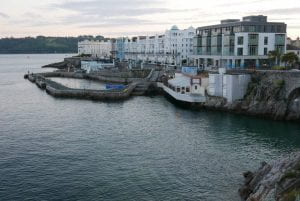
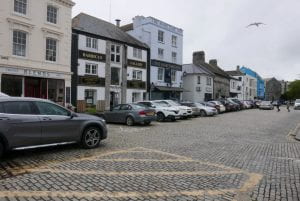
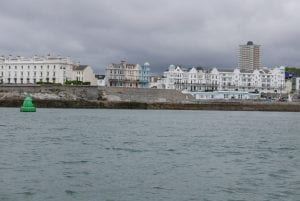
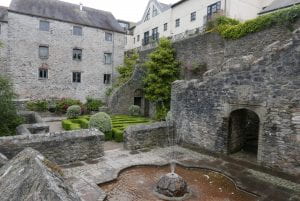
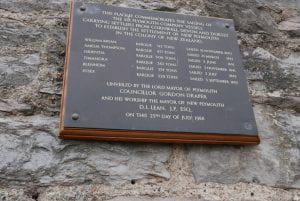
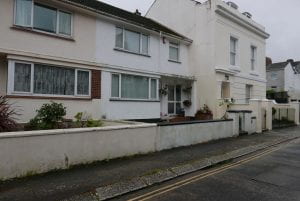

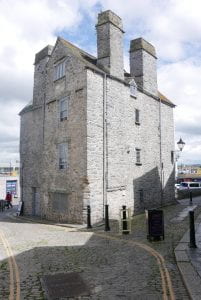

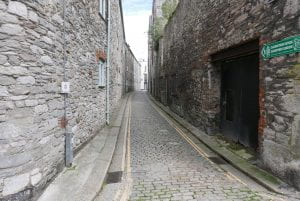
At 2 Union Street were (maternal) great-grandmother Susannah Good and great aunt Maria Good? I wonder if these Goods could be any relation to Worcestershire-born Captain Thomas Good (1823-1907) who arrived in Taranaki on the Louisa Campbell in 1845. A painter of landscapes and redoubts, he designed and built the Omata Stockade, and there are paintings by him in the Hocken. He settled in the Omata district and was a member of the Taranaki Provincial Council 1853-1863, being granted 400 acres at Urenui after service as Captain in the No.2 Company Bush Rangers. His daughter Fanny Bertha Good (1860-1950) – deaf due to maternal measles – has 260 botanical paintings in Puke Ariki. The family moved to Oeo in South Taranaki in 1875 and in 1910 to “Ramanui” near Hawera, where Fanny remained, painting prolifically until she moved to a rest home in New Plymouth, and the house was demolished.